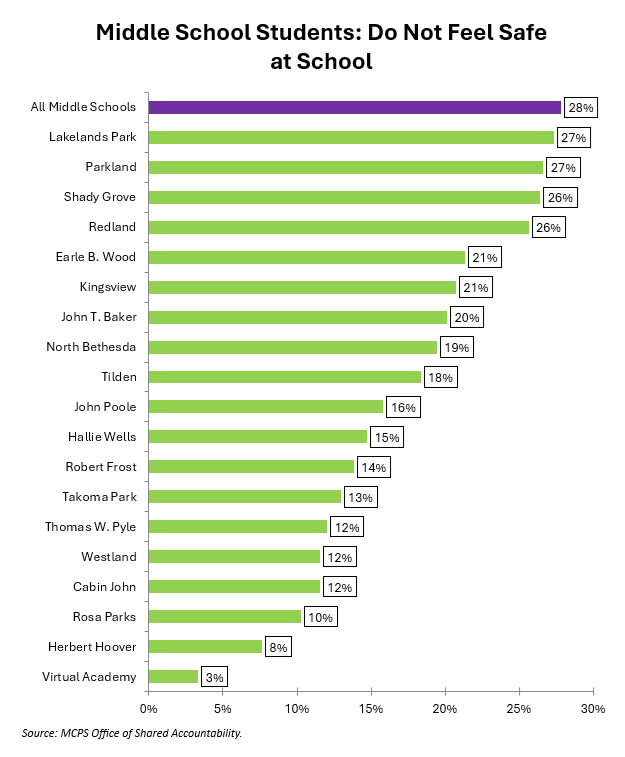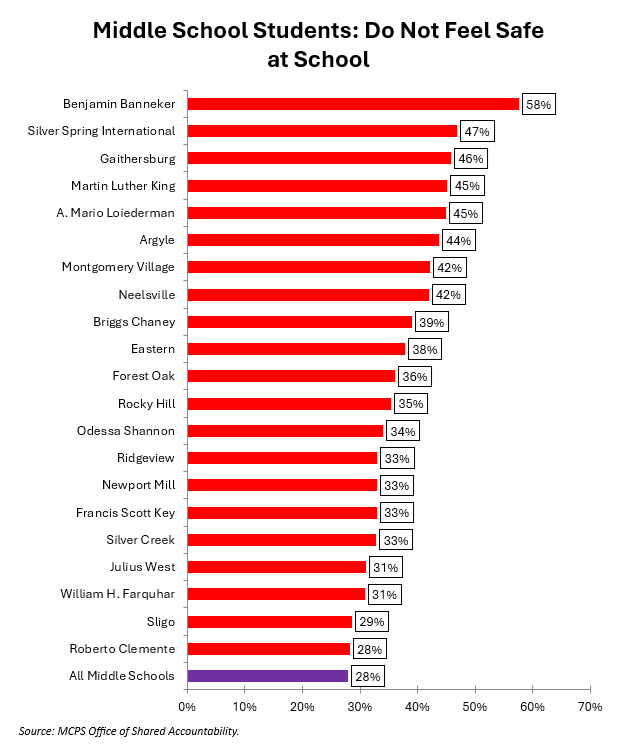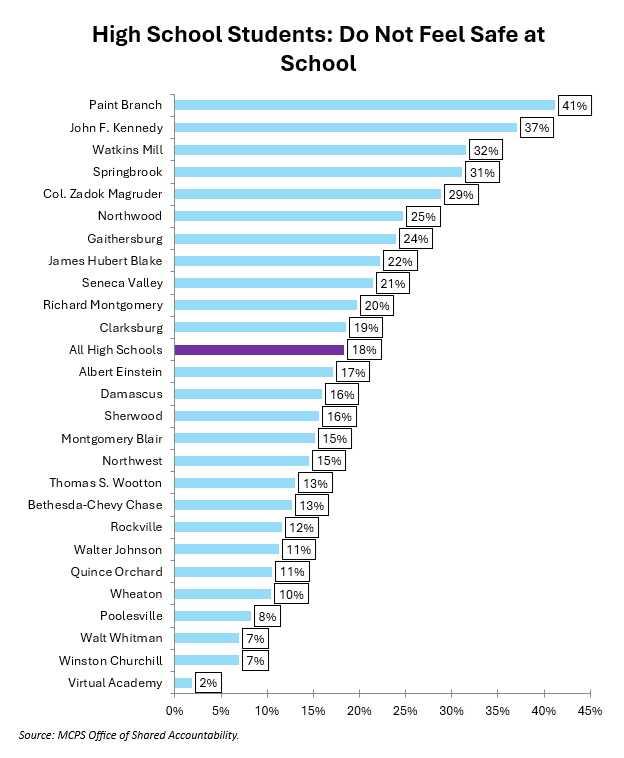By Adam Pagnucco.
Part One introduced the topic of whether MCPS students and staff feel safe at school. Part Two looked at racial data of students and staff. This part will examine individual middle and high schools from the perspective of students.
Students were asked to agree or disagree with this statement: “Overall, I feel safe at school.” Allowable answers were strongly agree, agree, disagree and strongly disagree.
Let’s start by looking at individual middle schools. 28% of middle school students disagreed or strongly disagreed with the statement that they felt safe at school. The chart below shows those middle schools that were below average on that response. In other words, these are the middle schools where students were most likely to feel safe.

Only 3% of virtual academy middle school students felt unsafe. That makes sense since these students were learning at home. (Virtual academy has since been closed.) Among physical schools, only 8% of students at Herbert Hoover MS in Potomac felt unsafe, the best result in MCPS. Rosa Parks MS (Olney), Cabin John MS (Potomac), Westland MS (Bethesda) and Thomas W. Pyle MS (Bethesda) also did really well on this measure.
Now let’s look at those middle schools with above average unsafe responses.

Benjamin Banneker MS in Burtonsville was the only middle school in MCPS where a majority of students felt unsafe. In A. Mario Loiederman MS (Silver Spring), Martin Luther King MS (Germantown), Gaithersburg MS and Silver Spring International MS, between 45% and 47% of students felt unsafe.
The chart below shows the percentage of students who did not feel safe at high schools.

Once again, virtual academy students were most likely to feel safe. The physical schools that performed best on this measure were Winston Churchill HS (Potomac), Walt Whitman HS (Bethesda) and Poolesville HS. On the other end of the spectrum, 41% of students at Paint Branch HS (Burtonsville) and 37% of students at John F. Kennedy HS (Silver Spring) did not feel safe.
Close observers of MCPS no doubt notice demographic patterns when looking at these school lists. We will explore that, but first, Part Four will look at this issue from the perspective of MCPS staff.
